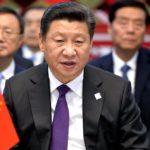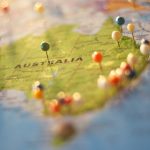The rise of non-traditional media
There have been many changes to the media landscape in recent years including the rise of digital media. Journalism Lecturer Dr Amalie Finlayson explains how new digital offerings are essential for informed and engaging debate.
Last week, former Prime Minister Julia Gillard chose online publication Guardian Australia to publish her first official comment – apart from a brief Twitter statement – since she was ousted from the Labor party leadership this year.
She used the platform, a relative newcomer to the Australian media landscape, to reveal her views on the purpose of power, the Australian Labor party and its future, and the need for ‘cool analysis’ following its resounding loss in the national election.
This was not the first time she had chosen the digital news and comment provider as a publisher for her views: when it launched in May, she provided an exclusive interview with them too, in which she criticised then-Opposition leader Tony Abbott’s paid parental leave scheme – and, on a lighter note, revealed she was a Game of Thrones fan (with ‘mother of dragons’ Daenerys Targaryen a favourite character).
Her choice of Guardian Australia as the mouthpiece for these pieces, rather than a more traditional news outlet, can be seen as a serious vote of confidence in this new player in the Australian media landscape, and has positive implications for the future of the industry in this country.
Guardian Australia launched here in Australia in May of this year, as an arm of the Guardian Media Group (GMG). GMG was originally founded as the Manchester Guardian in 1821. From these 19th-century beginnings, it is now a national British newspaper organisation, publishing The Guardian and the Observer in the UK, and a global entity, with its website, guardian.com, voted the best newspaper site in the world.
The group, unlike the majority of media organisations here in Australia, is independent, as it is owned by the Scott Trust, which reinvests profits into the Guardian and exists to protect the editorial freedom of its newspapers and online entities.
Its entry into the local market with a digital-only, paywall-free Australian edition, backed by local entrepreneur and Wotif founder Graeme Wood with enough investment to underwrite the site for the first five years, should not be underestimated.
Its presence here, along with other online publications such as Open Forum, The Conversation, Online Opinion and New Matilda, as well as the recent entries to the Australian market by US business and technology news website Business Insider and US fact-checking website Politifact, may in fact herald a new era for Australian media. Also in the mix are the stated intentions of two more US online publishing giants, social news and entertainment website Buzzfeed and the online news aggregator and blog The Huffington Post, to launch Australian versions, as well as, of course, the rise and rise of social media platforms such as Twitter, and their myriad implications.
When considered in the light of recent Australian media history, with its concentration of ownership, proprietorial editorial involvement (as highlighted particularly during this recent election with News Limited’s clear support of the Coalition), and widespread job losses, Guardian Australia’s presence here, as well as these other online voices, may offer us some sort of hope for a more diverse and independent local media.
Diversity in the media, and a corresponding diversity of opinion and perspective, are so essential for informed and engaging debate. Perhaps we can now look forward to a future where we have more options for informing ourselves at critical events in our nation’s history, rather than simply absorbing the rhetoric of media owners with vested interests in the outcomes of these events.
When Guardian Australia launched, its editor-in-chief Katherine Viner, who is also the deputy editor of the Guardian, said that it would focus on independence and put readers at the heart of the discussion.
“Australians are looking for an alternative that is truly independent, both global and local, which offers serious reporting and lively commentary,” she said.
Statistics support this statement too – 1.1 million readers from Australia regularly perused the Guardian’s global online offering before they created the local digital edition. We were the organisation’s fourth-biggest market of digital readers after the US, UK and Canada.
This enthusiasm for its independent journalistic offering has continued with the launch of Guardian Australia. The site – which is published on the guardian.com domain along with the UK and US editions and employs a small team of local journalists, including political editor Lenore Taylor, deputy political editor Katharine Murphy and Walkley-award winner David Marr, as well as a number of staff deployed from London – has to appoint extra staff.
Editor Katherine Viner was reported as saying that according to internal traffic figures, Guardian Australia’s page views in June 2013 were up 10 per cent month on month, and 57 per cent year on year, with an audience of more than three million. 33,700 comments were also seen on the site, which was a 51 per cent month on month increase, and which Viner said “clearly demonstrated the appetite for our ground-breaking open journalism approach in Australia”.
After what has been a fairly gloomy time in Australian media, perhaps our appetite for progressive and independent information and more open journalism, the increased diversity offered by Guardian Australia and the other aforementioned online offerings that are gaining traction in the landscape, are reason for a glimmer of hope.
It is early days yet, with Guardian Australia still in its fledgling period, and of course the traditional media players in this country are still dominant. Guardian Australia backer Graeme Wood’s other foray into the Australia media, The Global Mail, unfortunately experienced some problems, with launch editor Monica Attard leaving after just three months, and criticism about its lack of deadlines and slow turnover of content – and has failed to make much of an impact.
It looks, though, as if Guardian Australia may be headed for considerably more success, supported as it is by the Guardian Media Group which has such length and breadth of independent editorial experience – and by contributors such as former Prime Minister Julia Gillard. Whether current Prime Minister Tony Abbott engages with it in the same way as our first female leader remains to be seen.
Full disclosure: Amalie worked as a journalist for the Guardian Media Group in London from 2000-2003. She has no current professional affiliation with the organisation.
Dr Amalie Finlayson is a journalism lecturer at the School of Communication and Creative Industries at Charles Sturt University, and previously spent more than a decade working in online news media.













